Asbestos – Advanced Awareness
The advanced awareness training program has been developed to promote an in-depth awareness of the hazards and duties related to asbestos in the workplace. This program teaches participants how to identify locations where asbestos may be present and to understand the types of asbestos work.

OHSA Supervisory Due Diligence
This session has been designed to increase your understanding of the principle of due diligence and provide you with tools to implement the concept of due diligence in your workplace. As due diligence becomes rooted in the general thinking of a workplace, one may expect a positive shift in safety performance and a strengthened workplace safety culture. Due diligence is an effective barrier to potential convictions related to health and safety.

Lift Truck Operator
In our interactive eight-hour training program, your staff will learn the essential principles involved in the safe operation of a lift truck. Participants will learn about the limitations that affect truck stability and safe loading criteria. Operators will be able to recognize the hazards ahead of time that presents a risk to themselves and those around the truck and will get a complete understanding of the fundamentals of handling high-risk loads as well as their legal responsibilities.

Part 1 Certification Basic Training for Joint Health and Safety Committee Members
This certification involves training in health and safety law, as well as the identification, assessment, and control of hazards. Standards for this training are set by the Ministry of Labour, Immigration, Training and Skills Development and the ministry also certifies JHSC members who complete approved training programs.

Scaffolding and Ladder
This program focuses on safe practices when using scaffolds as work platforms. Despite the dangers, working on a scaffold can be straightforward and safe if users are trained and follow safe assembly, use and dismantling procedures. Provincial legislation outlines specific duties and responsibilities for employers, supervisors and workers. Knowing the rules and regulations is in everyone’s best interest.

Traffic Control
This training program teaches participants how to develop an effective traffic control plan. Participants learn how to identify and control hazards related to road construction. They will use the Ontario Traffic Manual: Book 7–Temporary Conditions as a reference in class. Excerpts from the Ontario Traffic Manual: Book 7 are provided to students during the training program for use in exercises and examples.
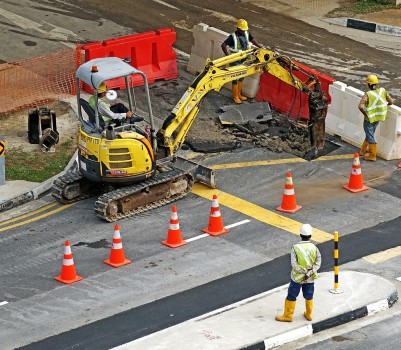
Worker Health and Safety Awareness
This training program has been designed to inform workers of the various safe work expectations, obligations and prohibitions that are communicated in the provisions of the OHSA. This training program also focuses on the health and safety resources and the individual rights that workers may use to maintain their personal workplace safety.

Workplace Violence and Harassment
This training program will teach learners the legislative requirements and importance of a Workplace Violence and Harassment policy. Participants will also be led through a review of the legislative provisions that prohibit violence and harassment in the workplace, as detailed in the Occupational Health & Safety Act (OHSA). New hires, Joint Health and Safety Committee members and any worker who wishes to have a deeper understanding of legislative rights and responsibilities mandated by the Occupational Health and Safety Act would benefit from this course.

Standard First Aid/CPR/AED
For First Aid training options please follow the link to Diamond Medical.
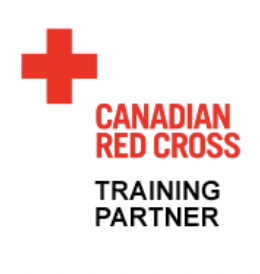
Arc Flash and Electrical Safety
This training program aims to make workers aware of the hazards of working on or around live electrical equipment as well as the measures and procedures that are required when live work is unavoidable. This program will provide participants with clear instruction and information on the technology, formulas, regulatory standards, and other considerations needed when dealing with arc flash assessment.

Asbestos Abatement Worker 253 W
This training program covers the topics a worker must be familiar with in order to write the Ontario Ministry of Training Colleges and Universities exam for Trade Code 253W as per Section 20 of Ontario Regulation 278/05 – Designated Substance – Asbestos on Construction Projects and in Buildings and Repair Operations. The course content is designed to prepare participants to write the AAW 253W exam.

Confined Space Entry Awareness
This training program will familiarize a participant with the requirements of Ontario Regulation 632/05 – Confined Spaces. Furthermore, the training program is intended to provide entrants, attendants and competent persons the skills and training required to recognize confined space entry risks and how to establish measured and corresponding controls. Participants will have the opportunity to become familiar with, inspect and use Confined Space Entry (CSE) access equipment and air quality instrumentation.

Elevating Work Platforms
Elevating Work Platforms (EWPs) such as scissor lifts and boom lifts can be safe solutions to working at height challenges. Unfortunately, lack of training, improper use and defective equipment has led to serious incidents involving workers in Ontario. The EWP course has been constructed to prepare operators for the safe use of EWPs. The theory module covers all classes of EWPs, while the practical module covers only the type of EWP used in the participant`s workplace.
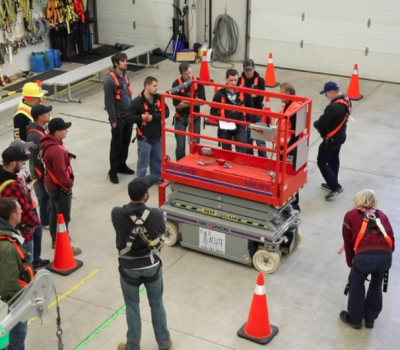
40 Hour HAZWOPER
This training program covers the requirements of the OSHA HAZWOPER standard (29CFR 1910.120). This standard sets out the minimum training requirements for site workers on hazardous waste sites, environmental remediation and emergency projects in the United States of America. The quality and comprehensive nature of this standard make it applicable and attractive to those employers and workers who work at Canadian workplaces that contain environmental contamination or hazardous materials.
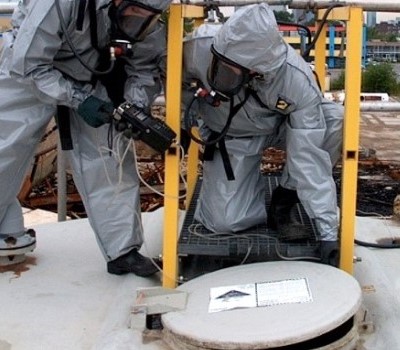
Lock-Out / Tag-Out
There are many types of potentially hazardous energy including, electrical, thermal, chemical, pneumatic, hydraulic, mechanical and gravitational energy. All hazardous forms of energy must be locked out, blocked or released to ensure that machinery or equipment does not turn on or move during installation, repair or maintenance. This training program will teach students the methods and the legislative requirements for hazardous energy control (Lockout) in the workplace.
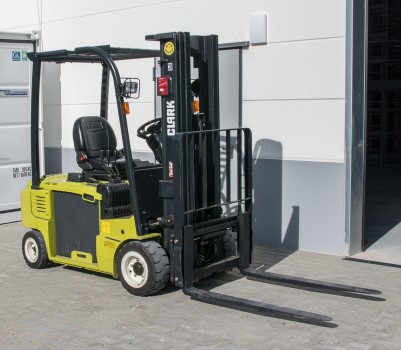
Joint Health and Safety Committee Part 2
A Joint Health and Safety Committees (JHSC) is a committee of at least two persons, who represent the workers and the employer at a workplace. Their primary role is to identify workplace health and safety problems and bring them to the attention of the employer. This certification (Part 1 and 2) involves training in health and safety law, and the identification, assessment, and control of hazards.
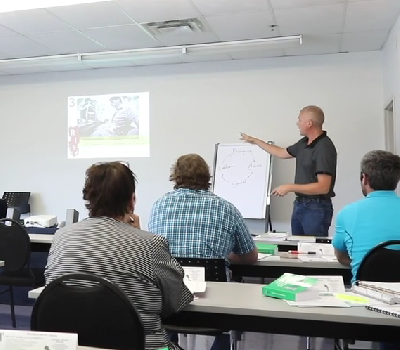
Spill Response
This training program will cover the legislative requirements and measures for spill reporting and cleanup. Participants will be taught practical strategies to both prevent and safely contain spills that occur in the workplace. Training programs are routinely customized to reflect client sites and products.

Transportation of Dangerous Goods
Transportation of dangerous goods training participants will be presented with a thorough overview of the Transportation of Dangerous Goods Regulation (TDGR). TDGR provisions will be explained in simple terms to help learners ensure that dangerous goods will be handled, offered for transport and transported safely.

Working At Heights
ACUTE’s Working at Heights training program has been approved by the Chief Prevention Officer under the Ministry of Labour, Immigration, Training and Skills Development’s Working at Heights Training Program Standard and the Working at Heights Training Provider Standard. The ACUTE Working at Heights training provides theory and hands-on practical training and evaluation facilitated by highly skilled and competent instructors.
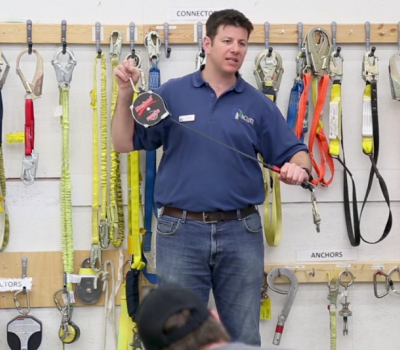
Asbestos Abatement Type 1 and 2
This training program is geared towards Construction and Maintenance Workers and their Supervisors that will need to conduct Type 1 and Type 2 Operations such as Emergency Clean-up, Removal and Replacement of Asbestos Containing Ceiling Tiles, Minor Asbestos Removals, Cutting and Drilling of Asbestos-Containing Plaster and Drywall.

Asbestos Abatement Supervisor 253 S
Supervisors of Type 3 asbestos abatement work are required to be certified to perform their supervisory role. This training program prepares a supervisor to write the Ontario Ministry of Training Colleges and Universities exam for Trade Code 253S as per Section 20 of Ontario Regulation 278/05 – Designated Substance – Asbestos on Construction Projects and in Buildings and Repair Operations.

Confined Space Rescue
This training program builds on the content of the Confined Space Entry Awareness course to train participants on the safety considerations and how to safely perform rescue from confined space. This program has a very significant practical component that can be physically demanding for some. Participants will have the opportunity to extricate weighted mannequins from our confined space simulators.
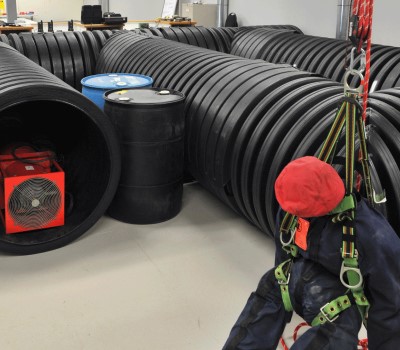
Excavation, Trenching and Shoring
The course is designed to provide participants with a comprehensive overview of legislative and practical considerations for safe and legislatively compliant excavation and trenching. This training program has been designed for those that excavate or work in trenches or excavations deeper than 1.2 metres (4 ft.).

8-Hour HAZWOPER Refresher
Every year after the initial 40-hour HAZWOPER training requirement has been met, workers who wish to maintain a current certification under the HAZWOPER standard must be updated. This training program meets the requirements outlined in OSHA 29 CFR 1910.120 for 8 (eight) hours of annual refresher training. The training program is composed of topics and can be customized to focus on topics that pertain to workplace hazards for workers associated with hazardous waste/materials operations.

Overhead Crane
Employers, supervisors, and workers who use, or work near or with, overhead cranes in their workplace should enroll. You will learn about Legislation and Guidelines, Hazard Awareness, Basic Equipment, Design Principles, Equipment Inspections, and other relevant topics relating to overhead cranes.
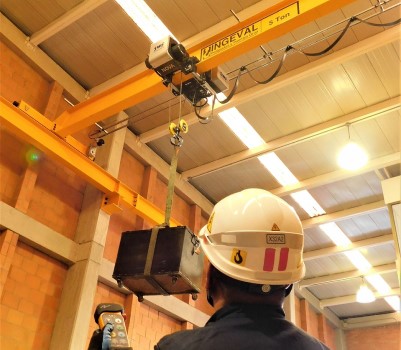
Respiratory Protection and Fit Testing
This training program will teach participants the legal and practical requirements for the use of respiratory protective equipment in the industrial and agricultural workplace. The program includes a review of various types of respiratory protective systems. Customer-specific training programs are offered. These courses are routinely customized to ensure specific coverage of specific brands and types of respiratory systems used by our clients.

WHMIS 2015 (GHS)
Program content has been designed to provide workers, supervisors and employers relevant information provided under WHMIS 2015 (GHS) about the safe handling, use and storage of hazardous materials in the workplace. Specific workplace examples are used wherever possible to enhance the relevance of the course for participants.

Working At Heights – Refresher Course
A Working At Heights refresher course must be taken every 3 years in order to remain Ministry of Labour, Immigration, Training, and Skills Development’s Chief Prevention Officer Approved. All participants must bring their CPO Issued Working at Heights Proof of Training Card. Learners will not be admitted into the course without this card. Failure to provide this card on the day of training will result in a forfeit of payment.

Acute is recognized and respected as a people organization and they have been doing it right for a long time.



